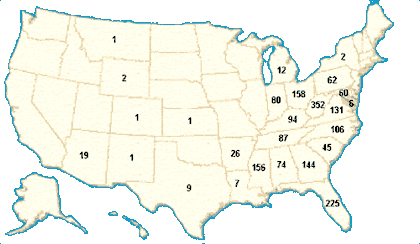If you spend any time in the town of Gauley Bridge West Virginia, you’ll likely notice two of its most notable landmarks–other than the obvious New and Gauley Rivers that converge to form the Kanawha River. At the beginning of the Kanawha are two large rock formations. On one stands a bus. On the other are three crosses. There’s a story behind both, and it’s an interesting juxtaposition of two men and personal expression.

To get to either feature requires a boat. We paddled up to both and explored. I understand why someone would erect crosses on a rock; Christian symbolism being what it is, it’s an obvious choice. When I started looking into who had decided that was a good spot to put crosses I solved a small personal mystery. If you pay attention in most midwest and southern states, you’ll notice them here and there along major highways; a set of three crosses, a large gold cross flanked by two blue crosses. Cross sets like this are dotted all over my home state of Ohio. Of course, they are representations of the crucifixion of Jesus. I always thought it was a thing that believers erected on their own property. I’d heard all kinds of theories over the years about the crosses; they were Klan crosses, they represented a secret society, and all that jazz. When people don’t really know, they tend to come up with all kinds of fantastical theories.
As I researched the Gauley Bridge crosses I learned that nearly all the roadside crosses were installed by one man; Bernard Coffindaffer, a Methodist minister and a World War II veteran who fought with the Marines on Iwo Jima. He was a native of Craigsville, West Virginia. He’d made his fortune in the coal industry, and then after recovering from a serious illness and surgery he had a vision from the Holy Spirit and began building crosses. His intent was to state the obvious; a reminder that Christ died to redeem the human race and would come again. He devoted his life to this work and built 1,864 sets of crosses in 29 states (that’s 5,592 individual crosses!) using his own money. People donated land for the crosses. West Virginia has 352 sets of Coffindaffer crosses — more than any other state. He built his last set of crosses in 1993, and died a month after they were installed. The Gauley Bridge crosses are Coffindaffer Crosses, and were erected in 1985.

He spent $3,000,000 of his own money on the project, and bankrupted himself in the task. Google his name; you’ll find a wealth of information about the man. Since his death, others have taken on the project. There’s been an effort to restore the original crosses and to add more installations. If you’re curious about the crosses, you can check out the website listed under the map above. There you will find a spreadsheet with cross information by state. Each set also has a designated caretaker, whose name and contact information is listed.
I tired to imagine what effort it must have taken to put these timbers into place. It’s a massive rock and weather in this region is harsh. We didn’t actually climb up on the rock to inspect them as its sides jut straight up out of the water at angles too challenging for senior citizens in kayaks. I guess that makes me a poor journalist, or at least one that has more care now about the possibility of breaking my fool neck than in the past. Not so Mr. Coffindaffer, who spent his golden years installing crosses in all kinds of improbable places, fueled by the strength of his belief.
Bill Geist interviewed Coffindaffer on CBS Sunday Morning just before he died. The interview recording is here: CBSSundayMorning.

Stay tuned for the next story, Crosses and a Bus, Part II!

I am from WV my hole life and just seen the buss other day and all the houses behind the buss are that all condemned and empty is that haw people got to them to was buy crossing the river or walking the tracks I wanted to find out about the little camp right behind the buss but don’t no wear to start thanks for your story it told me more then what I did no thanks
LikeLike